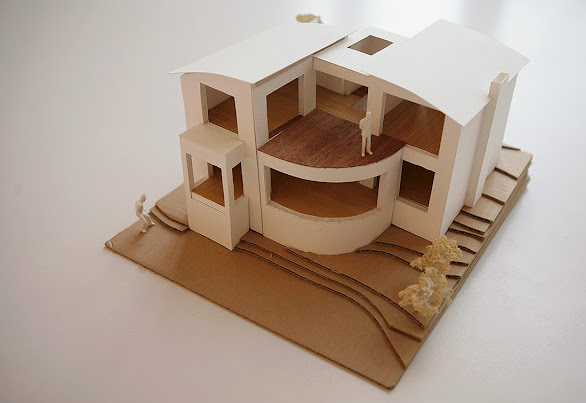Why we should all be building to the passivhaus standard?
When planning a new home naturally people’s initial focus is often on the site, what it might it look like and rooms. Discerning clients, particularly self-builders, are looking further ahead for environmentally low-impact design. This considers the carbon footprint, energy use and protection from escalating running costs. Thus Passivhaus.

However, there is so much more to sustainable design than just reducing energy use, it is also about creating comfortable and healthy environments. Passivhaus is a well-respected quality of sustainable design, to a standard of excellence well above current national standards.
- Energy efficient. Heating energy savings in a passivhaus building compared with a standard or Low Energy House.
- Comfortable. Passivhaus standard buildings rigorously deliver a comfort standard.
- Healthy and quiet. Similar to their high comfort standards, passivhaus buildings also provide a healthy and quiet indoor environment.
- Affordable. Perhaps the most frequently asked question regarding Passive House buildings is: How much do they cost?
- Versatile. There is flexibility.
For a building to be passivhaus, specification criteria must be met. The design principles guiding the approach follow the ‘fabric first’ approach. Rather than using the budget on eco-bling (the visibly ‘green’ additions like solar thermal panels, photovoltaics etc.), the passivhaus principles focus first on the building fabric. This is done by using available budget to optimise the unseen materials and construction specifications to deliver high quality, low energy buildings. Improving the basic performance of a building can be very difficult to do retrospectively. Renewable developments are advancing quickly, so designs can accommodate future installations.
Passivhaus achieves ultra-low carbon and energy operating costs, through low-energy consumption. It can deliver low to non-existent energy bills, with some designs capable of being cost negative over the course of the year.
Key areas in passivhaus design
Siting, orientation and form
First considerations relate to the topography and setting, unique to every site. Where can you locate the building within your site to maximise the daylight and sunlight, minimising the effect of prevailing wind. The benefits are obvious, access to sunlight will provide useful solar gains and more daylight will mean less reliance on artificial lighting, both of which mean less energy use.
The orientation of a building, particularly the aspect of the windows, will affect the ability of a building to benefit from useful solar gains. Buildings lose more heat through windows than they do through walls, but windows also provide solar gain which can be a benefit during the heating season. The gains through windows to south more than compensate for the heat losses, whereas the losses from north facing windows far exceed any gains. Therefore, it is preferable to have larger windows oriented to the south with smaller windows to the north.
While considering window positions, careful consideration needs to be given to solar shading. While heat gains during the heating season help reduce energy, summer gains will result in overheating if not managed. The only way to do this effectively is to provide external shading (brise soleil, balconies, blinds, shutters).
Windows facing east and west will also benefit from useful solar gain but owing to lower sun angles to these elevations (morning and evening), shading of windows to these is harder to achieve and options more limited (blinds, shutters).
The form of the building also affects heat loss. By keeping a building compact you will have less surface area through which heat can be lost for the same floor area. For example, a single storey U-shaped building could have as much as 40% more surface area than a two storey, compact building of the same floor area. There are obvious build cost benefits too.
Insulation
Insulation levels in a building affect energy use and comfort. The more insulation you wrap around the building, the less heat loss you’ll have, resulting in lower energy use to replace the lost heat.
Higher insulation levels result in warmer internal surfaces, providing greater levels of comfort. Passivhaus doors and windows are generally tripled glazed, providing great sound reduction too. The thermal performance of a passivhaus is significantly better than new buildings meeting current minimum standards in the Building Regulations. The minimum U-value targets for passivhaus have been set/optimised to deliver comfortable and healthy buildings, based on research data and scientific study; passivhaus performance targets won’t be changing.
Airtightness
A significant cause of heat loss is air leakage. It will take longer to warm a leaky building, requiring constant heat input to maintain a set temperature when reached.
Passivhaus sets a high airtightness performance target. As a comparison, Building Regulations have a minimum performance equivalent to a hole the size of a 20 pence piece in every 1 m2 of external envelope, while the minimum Passivhaus target is equivalent to a hole the size of a 5 pence piece in every 5 m2 of external envelope.
Ventilation
All buildings need a fresh air supply, otherwise comfort levels will decrease as CO2 and humidity levels increase. The high levels of airtightness in a passivhaus enable incoming fresh air to be managed. A common misconception is that a Passivhaus is a sealed box; it’s not. During the non-heating season, ventilation of a passivhaus is generally achieved by opening windows. In the heating season however, windows are kept shut. While most other buildings will receive ‘fresh’ air by virtue of uncontrolled draughts, a Passivhaus is provided with a controlled supply of fresh air via a ventilation system.
All new homes have extract ventilation from bathrooms and kitchens, it’s a Building Regulations requirement. Whereas a normal building will extract the warm, stale air and discharge it straight to outside (throwing away useful heat at the same time), a passivhaus uses Mechanical Ventilation with Heat Recovery (MVHR). This extracts the heat from the exhaust air, using it to heat the incoming air supply. You don’t waste heat and you have a warm fresh air supply rather than cold draughts.
Low energy systems
With the energy use associated with heating reduced to a minimum in a passivhaus, other forms of energy use become more significant, for example lighting and appliances, with the best rated appliances, systems and lighting to be used, affecting the passivhaus modelling.
Renewable energy
The final principle is given to renewable energy. It is better to focus available funds on the building fabric and passive elements which can positively contribute to a building’s performance, before including renewable energy. Ideally renewable energy systems should be included at the outset. Alternatively, consideration should be given to allow incorporation of these at a later date, for example south facing roof slopes for solar (PV or thermal) panels. The benefits to the residents build.
Passivehaus advice
The passivhaus principles are a framework for designing buildings to these quality and efficiency standards. As with all rules, it is how they are used and implemented; there is flexibility. There is so much more to consider; challenges and opportunities. That’s where a passivhaus expert can advise you; call us for a chat.

Paul Cooper
Peregrine Mears Architects